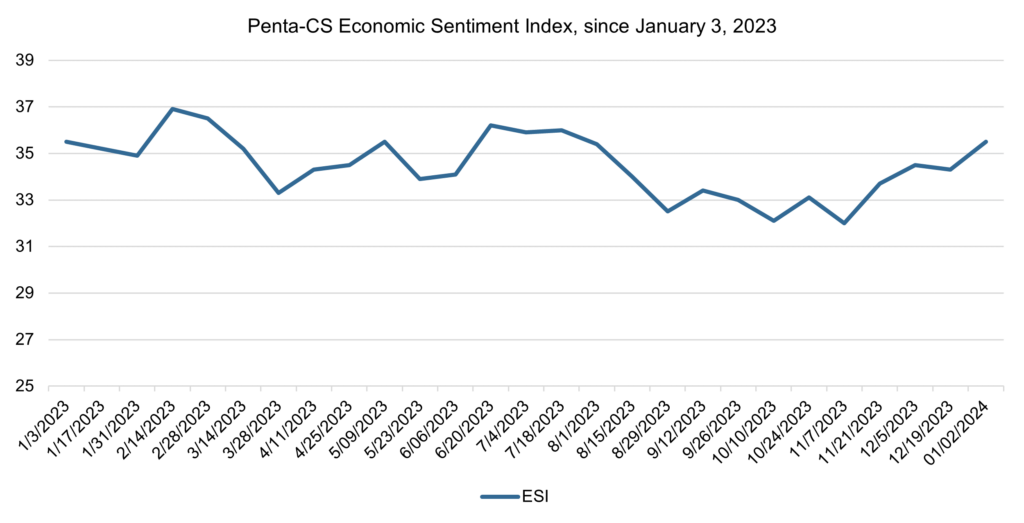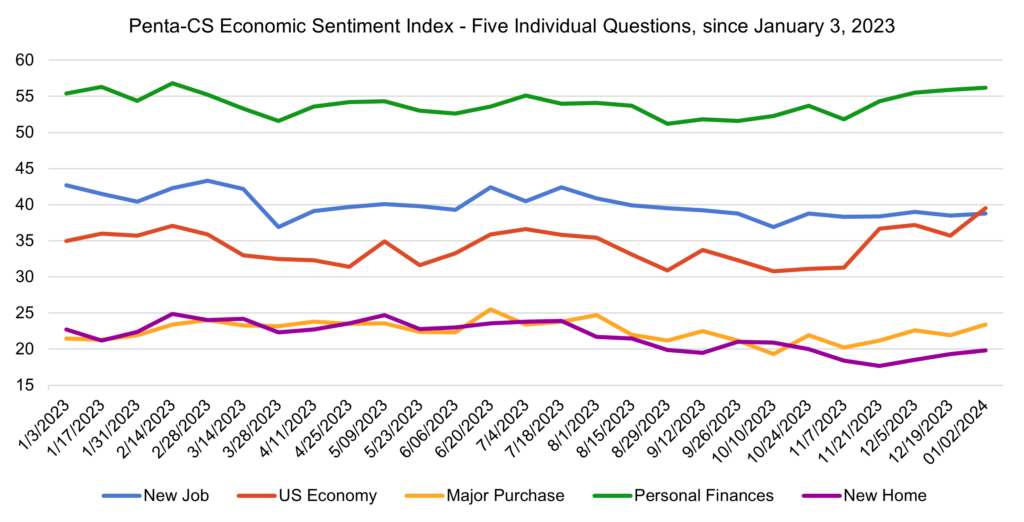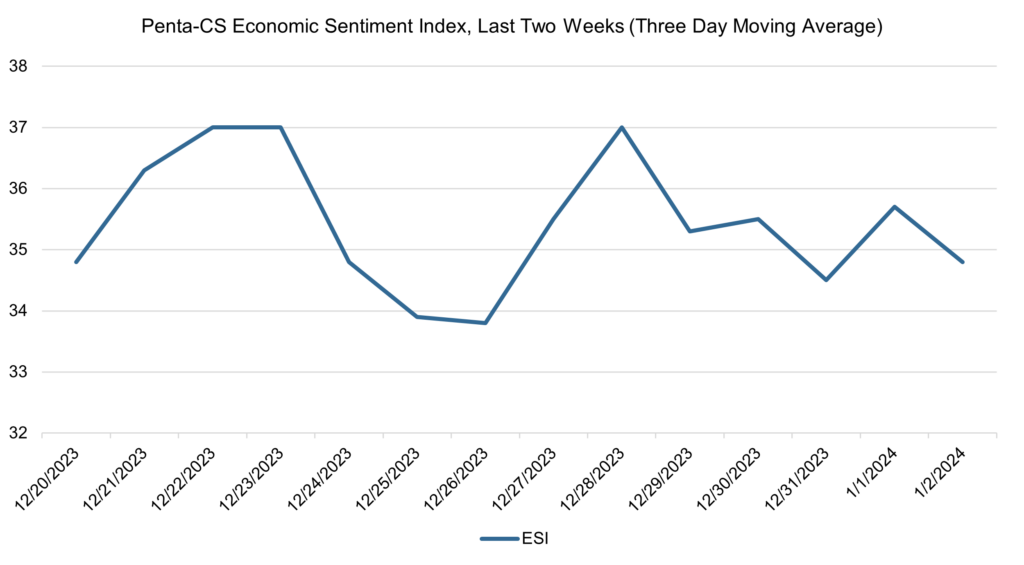Economic sentiment increases to its highest point since July 2023
Economic sentiment posted a strong increase to kick off 2024. The Penta-CivicScience Economic Sentiment Index (ESI) jumped 1.2 points to 35.5 over the past two weeks, rising to its highest point since July 2023.

All five of the ESI indicators increased over the past two weeks. Confidence in the overall U.S. economy rose the most, increasing 3.8 points to 39.5—the second largest single reading increase in over a year.
—Confidence in making a major purchase rose 1.5 points to 23.4.
—Confidence in finding a new job rose 0.3 points to 38.8.
—Confidence in personal finances rose 0.3 points to 56.2.
—Confidence in buying a new home rose 0.5 points to 19.8.
The S&P 500 closed out 2023 just 0.6% shy of its all-time high from January 2022, logging a 24% gain in 2023. Additionally, the week ending on December 29th constituted the ninth consecutive week that the S&P rose, representing its longest string of increases since January 2004.
The U.S. economy is projected to have added 170,000 jobs in December, capping a year in which 2.7 million jobs were added. While data from the Department of Labor showed that new state unemployment benefit claims rose 12,000 the week ending on December 23, indicating a cooling market, the labor market has remained resilient overall.
The strong finish to 2023 and resilient labor market may continue into 2024 as forecasts remain optimistic—Bank of America is predicting a soft landing rather than a recession.
Meanwhile, Mastercard SpendingPulse reported that holiday sales from November 1 to December 24 increased 3.1% year-over-year. This year’s sales are consistent with what is typical for the holidays. However, this growth is slightly lower than the 3.7% increase Mastercard SpendingPulse had previously projected for this holiday season.
Freddie Mac reported on December 28 that the average 30-year fixed mortgage rate fell to 6.61%, its lowest point since June of 2023. This was the first time average rates fell below 7% since August, and more than a full percentage lower than the 30-year peak of almost 8% in late October.

The ESI’s three-day moving average began this two-week stretch at 34.8 on December 20. It then rose to a peak of 37.0 on December 22 before trending downward to 33.8 on December 26. The three-day average then increased back up to a peak of 37.0 on December 28 then oscillated between increasing and decreasing before decreasing to 34.8 on January 2 to close out the session.

The next release of the ESI will be Wednesday, January 17, 2024.